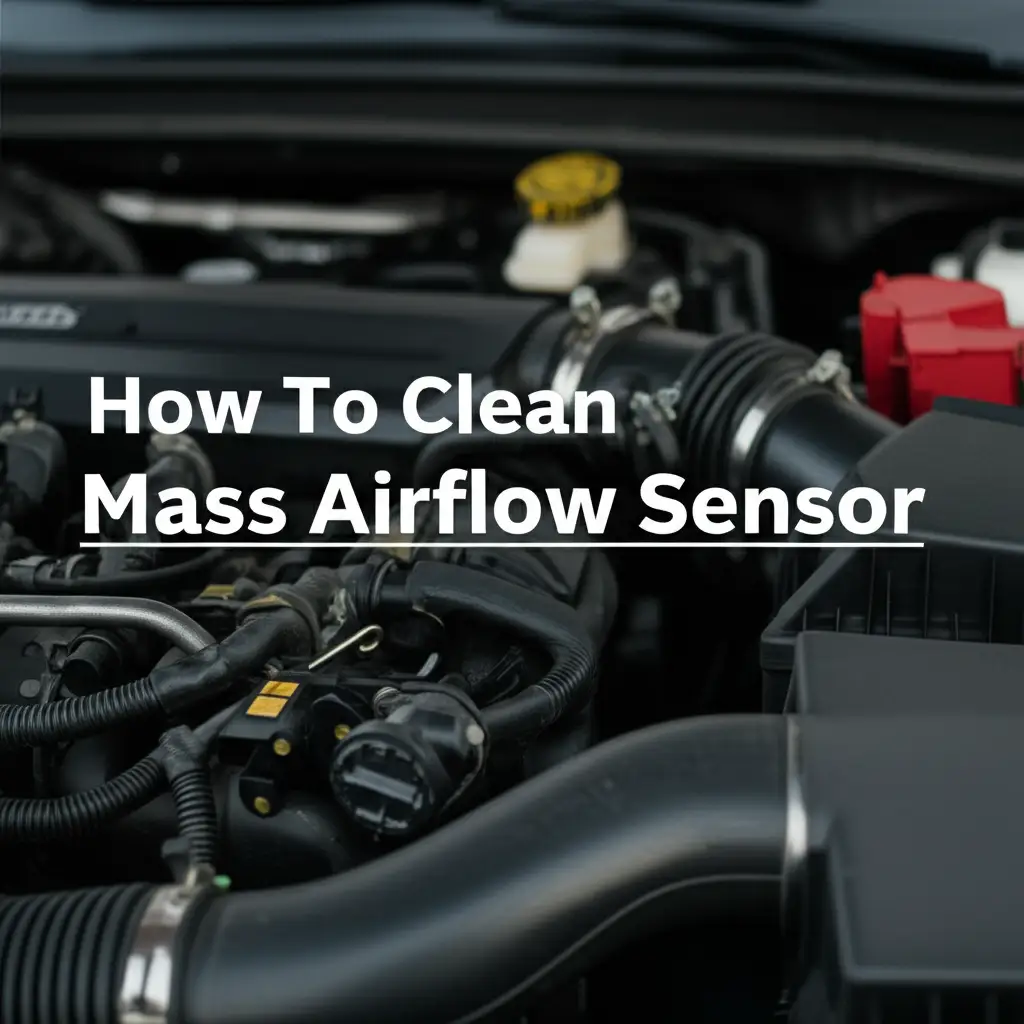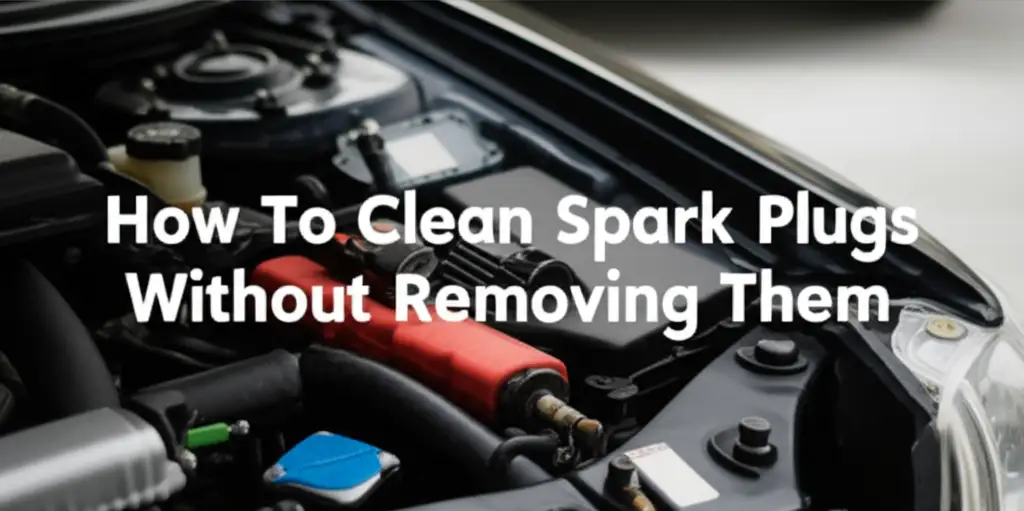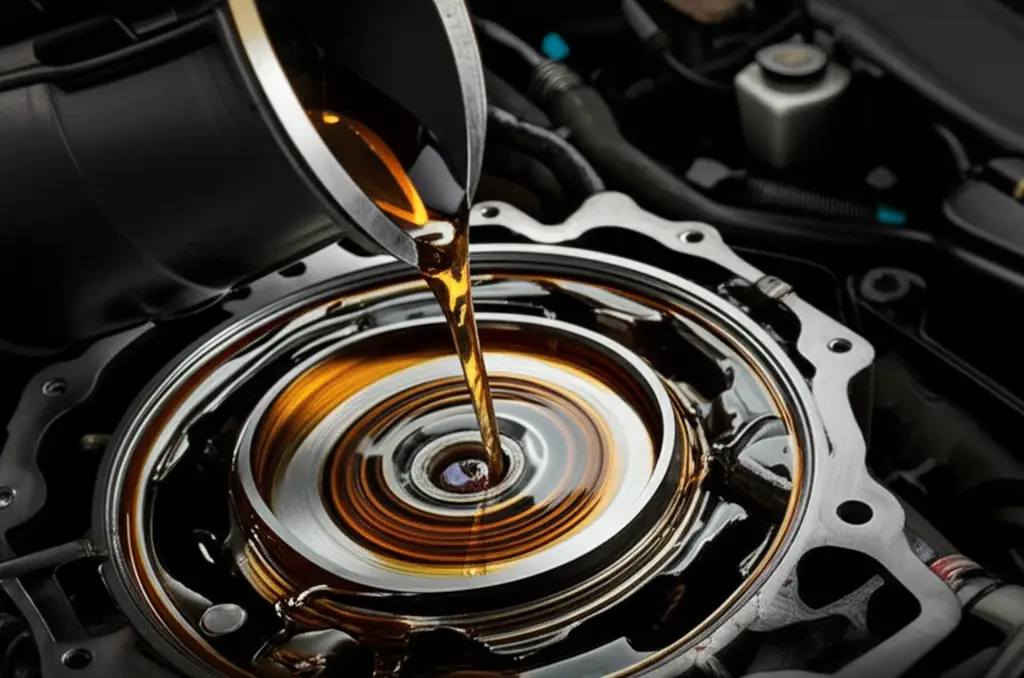· Automotive Maintenance · 17 min read
How To Clean Mass Airflow Sensor

Restore Engine Power: How to Clean Your Mass Airflow Sensor
Does your car feel sluggish? Are you noticing worse gas mileage? Many car owners face these issues. Often, a small component under the hood is the cause. This component is the mass airflow sensor. Learning how to clean mass airflow sensor parts can save you money. It also restores your vehicle’s performance.
A dirty mass airflow sensor sends bad data to your car’s computer. This leads to problems like rough idling or poor acceleration. Cleaning this sensor is a simple task for many DIY enthusiasts. You do not need many tools. The process takes little time. I will guide you through each step. We will cover why this sensor is important. We will discuss when to clean it. We will also look at common mistakes to avoid. Get ready to improve your car’s health.
Takeaway:
- A dirty mass airflow sensor impacts engine performance and fuel economy.
- Cleaning the MAF sensor is a simple DIY task.
- Use only specialized MAF sensor cleaner.
- Handle the sensor with extreme care to avoid damage.
- Regular cleaning can prevent costly repairs and improve vehicle efficiency.
To clean a mass airflow sensor, first disconnect the car battery. Locate the MAF sensor in the air intake tube. Carefully remove it from the vehicle. Spray the sensor wires with a specific MAF sensor cleaner. Allow the sensor to air dry completely. Then, reinstall the sensor and reconnect the battery. This process restores proper engine function.
What is a Mass Airflow Sensor and Why Your Engine Needs It
A mass airflow (MAF) sensor is a key part of your car’s engine management system. It measures the amount of air entering the engine. This measurement is crucial. The car’s computer, the Engine Control Unit (ECU), uses this data. It calculates the correct amount of fuel to inject. This ensures efficient combustion. Proper fuel-to-air mixture is vital for performance.
The MAF sensor sits between the air filter box and the throttle body. It uses a heated wire or film. Air flowing past cools this wire. The sensor measures the cooling effect. More air means more cooling. The ECU converts this signal into an air mass value. If the sensor is dirty, it sends inaccurate readings. This can cause the engine to receive too much or too little fuel. Both scenarios harm your car.
Think of the MAF sensor as your engine’s lung capacity monitor. It tells the brain (ECU) how much air the engine is breathing. Without accurate information, the engine cannot run well. A clean sensor ensures your engine gets the right fuel mix. This means better gas mileage. It also means smoother acceleration. Your car will feel more responsive. Understanding this basic function helps you see why cleaning is important.
The importance of the MAF sensor cannot be overstated. It directly influences fuel efficiency. It also affects engine power. It helps control emissions. A malfunctioning sensor can trigger your “Check Engine” light. This light signals a problem. Ignoring it can lead to more serious issues. Regular maintenance, including cleaning this sensor, keeps your car running strong.
Signs Your Mass Airflow Sensor Needs Cleaning
Your car tells you when its mass airflow sensor needs attention. Learning these signals helps you act fast. One common sign is a rough idle. The engine might shake or vibrate more than usual when stopped. This happens because the ECU gets bad air readings. It struggles to maintain a steady engine speed. You might notice this at traffic lights.
Another clear indicator is poor acceleration. Your car may feel sluggish. It might not respond quickly when you press the gas pedal. This is because the engine does not get the correct fuel-air mixture. It cannot produce its full power. Climbing hills might become a struggle. Overtaking other cars feels harder. This loss of power is very noticeable.
You might also experience decreased fuel economy. The car consumes more gasoline for the same distance. A dirty MAF sensor can cause the engine to run “rich.” This means too much fuel is injected. The extra fuel is wasted. This leads to more frequent trips to the gas station. Keeping track of your mileage helps you spot this issue.
Sometimes, your “Check Engine” light turns on. Modern cars have onboard diagnostic systems. They detect sensor malfunctions. A dirty MAF sensor often triggers specific trouble codes. These codes point directly to the mass airflow sensor. Common codes include P0100, P0101, P0102, P0103, and P0104. Reading these codes with an OBD-II scanner confirms the problem. If you see these codes, cleaning the sensor is a good first step.
The engine might also stall frequently. This happens especially at low speeds or when coming to a stop. The erratic readings from a dirty sensor confuse the ECU. It cannot manage the engine’s RPMs properly. This leads to unexpected shutdowns. In some cases, the car may even have trouble starting. Recognizing these symptoms early saves you time and money on repairs.
Essential Tools and Supplies for a Successful MAF Sensor Cleaning
Before you start cleaning your mass airflow sensor, gather the right tools. Having everything ready makes the job smoother. You do not need a lot of specialized equipment. A few basic items will suffice. Getting the right supplies is critical. Using the wrong cleaner can destroy the sensor.
First, you need a specialized MAF sensor cleaner. This is the most important item. These cleaners are residue-free. They evaporate quickly. They do not leave deposits that could harm the delicate sensor wires. Do not use brake cleaner, carburetor cleaner, or any other general-purpose cleaner. These products contain harsh chemicals. They can corrode or damage the sensor. Look for a spray can specifically labeled “MAF Sensor Cleaner.” Many auto parts stores carry it.
You will also need a screwdriver or a socket wrench set. The type depends on how your car’s MAF sensor is mounted. Some use Phillips head screws. Others use Torx bits. Most use clamps that need a flathead screwdriver or a small socket. Check your car’s manual or visually inspect the sensor bolts first. This prevents delays during the cleaning process.
Always prioritize safety. Wear safety glasses to protect your eyes from spray. You might want to wear gloves too. This keeps your hands clean. It also protects them from any residue. Have a clean, lint-free cloth or paper towels ready. These are for wiping parts or catching drips. Do not use anything fuzzy that could leave fibers. You do not want any particles sticking to the sensor.
Ensure your car’s engine is cool. A hot engine poses burn risks. The air intake system should also be cool. This makes it easier to handle parts. Work in a well-ventilated area. The cleaner has fumes. Good airflow disperses these fumes quickly. I find preparing my workspace in advance makes any car job easier. This preparation helps you avoid rushing. It also helps prevent mistakes. Taking these steps ensures a safe and effective cleaning experience.
Step-by-Step Guide: Cleaning Your Mass Airflow Sensor Safely
Cleaning your mass airflow sensor is a straightforward task. Follow these steps carefully to avoid damage. This process should take about 15-30 minutes. Take your time. Precision is more important than speed here.
Step 1: Disconnect the Car Battery
Safety first! Always disconnect your car’s negative battery terminal. Use a wrench to loosen the nut. Pull the cable away from the battery post. This prevents electrical shorts. It also resets the car’s computer. The ECU will then re-learn after you clean the sensor. This step ensures no power goes to the sensor during removal or cleaning.
Step 2: Locate the Mass Airflow Sensor
The MAF sensor is typically found in the air intake system. It sits between the air filter box and the throttle body. Look for a plastic tube coming from your air filter. The MAF sensor is usually integrated into this tube. It might be near a wire harness connection. Its location can vary slightly by car model. Consult your car’s owner manual if you cannot find it.
Step 3: Disconnect Electrical Connector and Remove Sensor
First, unplug the electrical connector from the MAF sensor. There is usually a tab or clip to press. Be gentle. These plastic connectors can be fragile. Next, remove the sensor from the air intake tube. It is usually held in place by two small screws or clips. Use your screwdriver or wrench for this. Pull the sensor straight out. Handle it with extreme care. The sensor element inside is very delicate. Try not to touch it directly.
Step 4: Spray the Sensor Element
Hold the MAF sensor firmly. Hold it by its plastic housing. Do not touch the delicate wires or film inside. Use your specialized MAF sensor cleaner. Spray the sensor element generously. This includes the small wires or the tiny film. Spray both sides of the element. Do not use brushes or cloths. The spray alone should remove contaminants. Let the cleaner drip off. This process is similar to how you might clean other sensitive air sensors, making sure to use a non-abrasive method. For example, when you learn how to clean Novo X Air Sensor, you’ll find similar principles of gentle application apply.
Step 5: Allow the Sensor to Air Dry Completely
This step is crucial. Do not rush it. The cleaner must evaporate fully. This usually takes 10 to 15 minutes. Place the sensor on a clean, lint-free surface. Do not use compressed air to speed drying. Compressed air can damage the sensitive parts. Once it looks completely dry, it is ready for reinstallation. Ensure no moisture remains on the sensor.
Step 6: Reinstall the Sensor and Reconnect Battery
Carefully slide the dry MAF sensor back into its housing. Make sure it seats properly. Reinsert the screws or clips. Tighten them just enough to secure the sensor. Do not overtighten. Reconnect the electrical connector. Push it until you hear a click. Finally, reconnect the negative battery terminal. Tighten its nut. Start your car. Take it for a test drive. You should notice improved performance.
Troubleshooting and Common Mistakes to Avoid During MAF Cleaning
Cleaning your mass airflow sensor can improve car performance. However, mistakes during the process can cause more harm than good. Knowing what to avoid is as important as knowing what to do. I have seen common pitfalls. I want you to avoid them.
One major mistake is using the wrong cleaner. As mentioned, only use a dedicated MAF sensor cleaner. Products like brake cleaner, carburetor cleaner, or WD-40 are too harsh. They leave residues or corrode the delicate sensor wires. This can permanently damage the sensor. The specific chemicals in MAF cleaner are designed to evaporate cleanly. They do not harm sensitive components. Always check the label.
Another critical error is touching the sensor element. The hot wire or film inside the MAF sensor is extremely fragile. Even a light touch from your finger can leave oil. This oil can disrupt its function. It can also break the tiny wires. Always handle the sensor by its plastic housing. Let the spray cleaner do all the work. Remember, the sensor elements are microscopic. They are easy to damage.
Not allowing the sensor to dry completely is another common mistake. If you reinstall a damp sensor, it can cause problems. The residual cleaner might interfere with readings. It could even cause a short circuit. Give it at least 10-15 minutes to air dry. Do not use towels, rags, or compressed air to speed up drying. These can leave fibers or exert too much pressure. Both can damage the sensor.
Overtightening the mounting screws or clips is also a problem. The MAF sensor housing is often plastic. Overtightening can crack the housing. This creates air leaks. Air leaks around the sensor give false readings. This defeats the purpose of cleaning it. Tighten screws snugly. Do not force them. A good seal is important, but excessive force is damaging.
If your car’s symptoms do not improve after cleaning, consider other issues. A MAF sensor might be faulty. It might need replacement. Sometimes, the problem lies elsewhere in the engine system. A check engine light that persists means you need more diagnosis. An OBD-II scanner can provide further diagnostic codes. It helps pinpoint other potential problems. For example, vacuum leaks or a dirty air filter can mimic MAF sensor symptoms. Regular check-ups with a mechanic can help identify if it’s the sensor or another related component that needs attention, much like how you would consider specific cleaning methods for other car components or even home appliances like learning how to clean moisture sensor on Samsung dryer if it’s not performing optimally.
Benefits and Expectations After Cleaning Your MAF Sensor
After you clean your mass airflow sensor, you should notice immediate improvements. The changes can be quite significant. Your car will feel different. Many problems caused by a dirty sensor will disappear. I always feel a sense of accomplishment after this task.
One of the first things you will likely notice is a smoother idle. The engine will run more steadily. It will not shake or fluctuate RPMs when stopped. This is because the ECU now receives accurate air data. It can maintain the proper fuel mix. The engine operates more predictably. This makes driving more pleasant, especially in traffic.
You should also experience improved acceleration. Your car will respond better to the gas pedal. It will pick up speed more easily. Overcoming sluggishness feels great. The engine gets the right amount of fuel for the air it takes in. This maximizes power output. You will feel your car’s original pep return.
Another significant benefit is better fuel economy. Since the engine is no longer running rich, it uses less fuel. You will see a positive change in your gas mileage. This means fewer trips to the gas station. Over time, these savings add up. Cleaning your MAF sensor pays for itself quickly through fuel savings. This benefit alone makes the cleaning effort worthwhile.
The “Check Engine” light may also turn off. If a dirty MAF sensor was the cause, the ECU will register correct readings. The diagnostic system will clear the fault code. Sometimes, you may need to drive a few cycles for the light to turn off. If it stays on, you might need to manually reset it with an OBD-II scanner. Or, it could indicate another underlying issue.
It is important to manage expectations. Cleaning a MAF sensor works for accumulated dirt and grime. If the sensor is truly faulty or physically damaged, cleaning will not fix it. In those cases, replacement is necessary. Symptoms that do not clear up after cleaning suggest a bad sensor. Or, they point to a different problem entirely. However, for most performance issues related to a dirty MAF, cleaning provides an effective solution. It is a vital part of proactive car maintenance.
Proactive Maintenance: Keeping Your MAF Sensor Clean Longer
Cleaning your mass airflow sensor is a great maintenance step. But you can do more. Proactive measures keep it clean longer. This saves you future headaches. It also maintains your car’s optimal performance. I always advocate for preventative care.
The most important step is regular air filter replacement. The air filter is your engine’s first line of defense. It traps dirt, dust, and debris. This prevents contaminants from reaching the MAF sensor. A clogged or dirty air filter allows small particles to pass through. These particles then stick to the MAF sensor wires. Check your air filter according to your car’s service schedule. Replace it if it looks dirty. A clean air filter means cleaner air for your sensor.
Consider the quality of your air filter. Some aftermarket filters use oil. This oil can sometimes migrate onto the MAF sensor. If you use an oiled filter, be careful not to over-oil it. Follow the manufacturer’s instructions closely. A slightly over-oiled filter can leave a film on the sensor. This film will cause issues over time. Dry paper or synthetic filters are often safer choices for MAF sensor longevity.
Inspect your engine’s PCV (Positive Crankcase Ventilation) valve. A faulty PCV valve can cause oil vapors to enter the intake system. These oil vapors can contaminate the MAF sensor. If your PCV valve is stuck open or clogged, replace it. It is a small, inexpensive part. Yet, it plays a big role in keeping your intake system clean. This contributes to overall engine health.
Keep your engine bay relatively clean. Dirt and debris in the engine bay can find their way into the air intake. While the air filter should stop most of it, a cleaner environment helps. Avoid driving through excessively dusty or dirty conditions if possible. If you do, consider checking your air filter more often. These simple habits contribute to the longevity of your MAF sensor. They also benefit your entire engine. By staying on top of these items, you reduce the frequency of MAF sensor cleaning. You also ensure your car runs efficiently for longer.
Frequently Asked Questions
How often should I clean my MAF sensor?
It depends on your driving conditions. Many mechanics recommend cleaning your MAF sensor every 30,000 to 50,000 miles. If you drive in dusty environments, clean it more often. If your car shows symptoms of a dirty MAF sensor, clean it as soon as possible. Regular maintenance helps prevent performance issues.
Can a dirty MAF sensor cause poor gas mileage?
Yes, absolutely. A dirty MAF sensor sends incorrect air readings to the car’s computer. This often causes the engine to run “rich,” meaning it injects too much fuel. Excess fuel is wasted. This directly leads to decreased fuel efficiency. Cleaning the sensor can significantly improve your gas mileage.
What happens if I don’t clean my MAF sensor?
If you ignore a dirty MAF sensor, your car’s performance will suffer. You may experience rough idling, hesitant acceleration, and poor fuel economy. The “Check Engine” light will likely stay on. Over time, constant rich running can damage the catalytic converter. This leads to very expensive repairs.
Can I use regular brake cleaner for my MAF sensor?
No, never use regular brake cleaner or carburetor cleaner. These products contain harsh solvents. They can damage the delicate wires or film inside the MAF sensor. They also leave residues that interfere with sensor function. Always use a specialized mass airflow sensor cleaner. These cleaners are designed to evaporate completely without leaving harmful deposits.
Do all cars have a MAF sensor?
Most modern fuel-injected cars have a MAF sensor. Older vehicles or some specific models might use a Manifold Absolute Pressure (MAP) sensor instead. The MAP sensor measures air pressure in the manifold. It determines air density indirectly. You can check your car’s manual or consult a mechanic if you are unsure which sensor your vehicle uses.
When should I replace my MAF sensor instead of cleaning it?
If cleaning does not resolve your car’s symptoms, the sensor might be faulty. Physical damage to the sensor wires or housing also indicates a need for replacement. If your car shows specific MAF sensor trouble codes after cleaning, replacement is likely necessary. Sometimes, age and wear simply cause the sensor to fail beyond cleaning.
Conclusion
Cleaning your mass airflow sensor is a straightforward, impactful maintenance task. It directly improves your car’s performance and fuel economy. We have covered why this small sensor is vital. We have discussed how to recognize a dirty sensor. We also provided a step-by-step guide to cleaning it. Remember to always use the correct cleaner. Always handle the sensor with care.
Taking this simple step can restore your vehicle’s responsiveness. It can also turn off that annoying “Check Engine” light. Proactive maintenance, like regular air filter changes, will keep your mass airflow sensor clean for longer. This saves you money on gas. It also prevents more expensive repairs down the line. I encourage you to try this DIY project. You will feel more confident about your car’s health. Give your engine the clean air readings it needs. Enjoy a smoother, more efficient drive today!
- mass airflow sensor
- MAF sensor cleaning
- car engine repair
- DIY car maintenance
- fuel efficiency
- engine performance
- vehicle care




